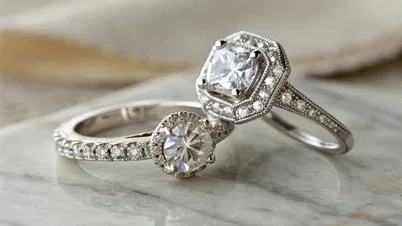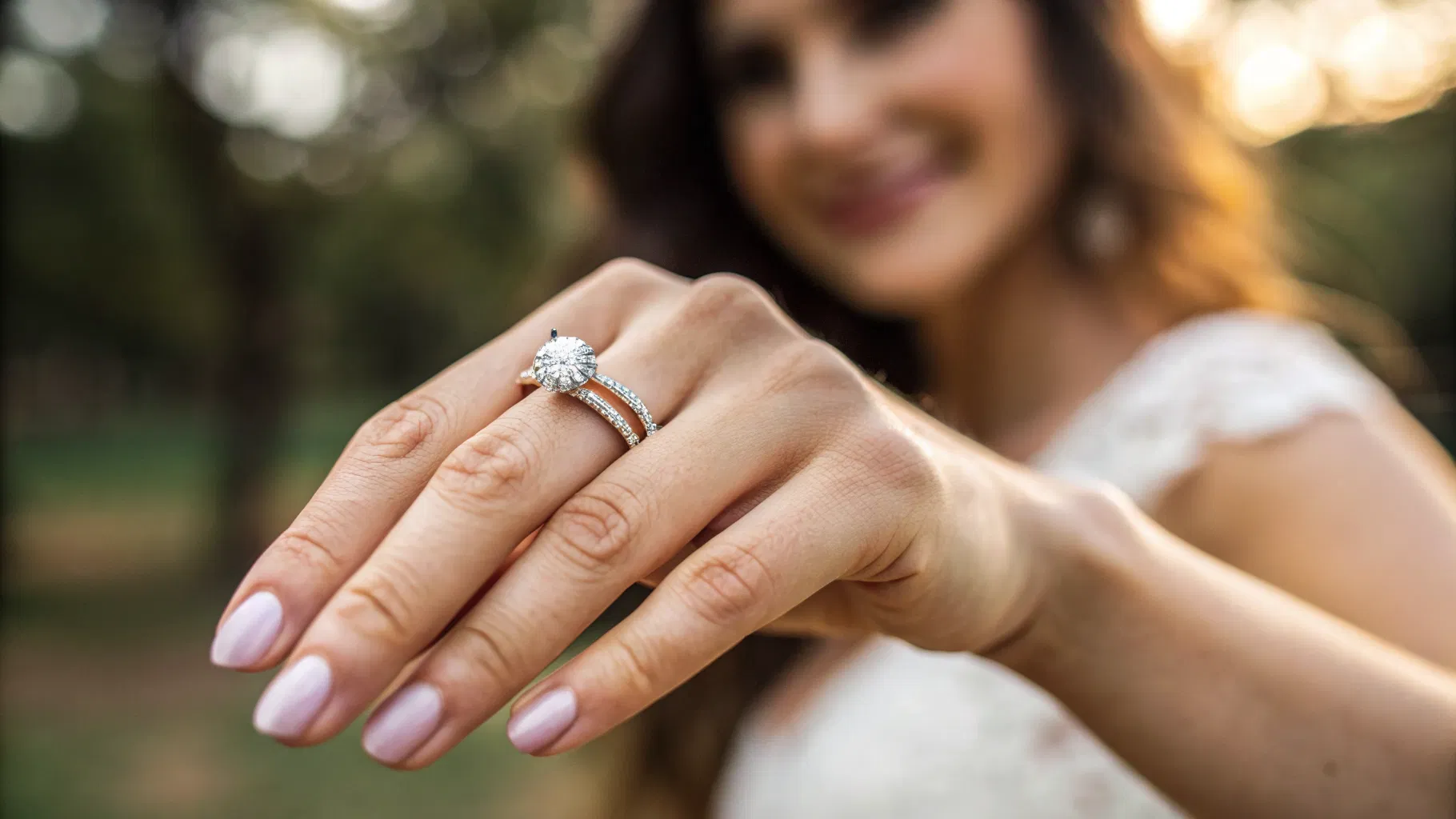
Who Invented the Diamond Engagement Ring? A Journey Through History and Meaning
Introduction
Can true luxury also be truly ethical? This question resonates deeply with us at DiamondsByUK, where we strive to redefine luxury by making sustainable, conflict-free diamond jewelry accessible to all. As lovers of fine jewelry, we understand that the choices we make in our engagements can reflect our values—especially when it comes to selecting an engagement ring that symbolizes love and commitment.
The tradition of giving an engagement ring dates back centuries, yet the diamond engagement ring, as we know it today, has a fascinating history. This blog post will explore the origins of the diamond engagement ring, tracing its evolution from ancient practices to modern customs. We will delve into the cultural significance of diamonds, the impact of marketing on their popularity, and how our commitment to ethical luxury at DiamondsByUK shapes the way we approach this timeless symbol of love.
Are you dreaming of a piece of jewelry that’s as unique as your story? Join us as we uncover the rich tapestry of history surrounding the diamond engagement ring and discover how you can make ethical choices in your engagement journey.
The Early History of Engagement Rings
The concept of engagement rings has a long and varied history. It is believed that the tradition can be traced back to ancient Rome around 200 B.C., where rings symbolized legal contracts and were often made from materials like flint, bone, and iron. Unlike the diamond rings of today, these early rings were practical rather than luxurious, serving as a token of commitment rather than a symbol of love.
Roman Influences
In ancient Rome, it was customary for a man to give his betrothed a ring as a sign of ownership and commitment. This ring would often be made of iron for everyday wear at home, while a more ornate gold ring was worn in public, reflecting the wealth and status of the individuals involved. The Romans believed that the fourth finger of the left hand contained a “vein of love” (vena amoris) that connected directly to the heart, a belief that continues to influence our ring-wearing customs today.
The Role of Christianity
Fast forward to the 9th century, and the engagement ring began to take on new meanings within Christian traditions. Pope Nicholas I is credited with formalizing the notion that an engagement ring signified a monetary sacrifice and the man's intention to marry, reinforcing the ring's role in the betrothal process. This concept evolved, and by the 12th century, engagement rings were becoming more ornate, often featuring intricate designs and precious materials.
The First Recorded Diamond Engagement Ring
While engagement rings have been around for centuries, the first recorded use of a diamond engagement ring occurred in 1477. Archduke Maximilian of Austria commissioned a diamond ring for his betrothed, Mary of Burgundy, marking a significant cultural shift. This extravagant gesture ignited a trend among the European aristocracy and nobility, and the diamond engagement ring began to symbolize wealth and status.
The Impact of Royalty
The influence of royalty on jewelry trends cannot be overstated. Following Maximilian's gesture, diamond engagement rings became highly desired among the upper classes. However, diamonds remained a luxury item, accessible only to the wealthy for many years due to their rarity and the high costs associated with them.
The Victorian Era and the Rise of Ornate Designs
The Victorian era (1837-1901) saw the engagement ring evolve even further. During this period, ornate designs became popular, incorporating not only diamonds but also other gemstones and intricate metalwork. The Victorians often used engagement rings to express sentimental messages, leading to the creation of "posey rings," which featured engraved poems or meaningful phrases.
The Edwardian and Art Deco Eras
As we moved into the Edwardian era (1901-1910), the trend for elaborate designs continued, with filigree settings and intricate craftsmanship becoming the norm. This period emphasized the elegance and artistry of jewelry, leading to the rise of the diamond as a central feature in engagement rings.
The Art Deco movement (1920s-1930s) brought with it a shift toward geometric designs and bold styles. Diamonds were now being cut into various shapes, including the popular round brilliant cut, which remains a favorite today. This era marked a pivotal moment in diamond engagement ring design, as it embraced both luxury and innovation.
The Marketing Revolution: "A Diamond is Forever"
The modern diamond engagement ring's popularity can largely be attributed to a groundbreaking marketing campaign launched by De Beers in the late 1930s. Faced with declining sales during the Great Depression, De Beers sought to redefine the cultural significance of diamonds. Their now-iconic slogan, "A Diamond is Forever," was introduced in 1947, cementing the idea that diamonds were the ultimate symbol of enduring love.
The Role of Advertising
De Beers' marketing efforts not only educated the public about the 4 Cs—cut, color, clarity, and carat weight—but also established diamonds as the standard for engagement rings. By associating diamonds with romance and commitment, they transformed consumer perceptions and increased sales dramatically. This campaign solidified the diamond's status as the preferred gemstone for engagement rings in the Western world.
The Shift Towards Ethical and Sustainable Choices
As awareness of ethical issues surrounding diamond mining has grown, so too has the demand for sustainable and conflict-free alternatives. At DiamondsByUK, we are proud to specialize in IGI-certified lab-grown diamonds, which offer the beauty and brilliance of natural diamonds without the ethical concerns associated with traditional mining practices.
The Benefits of Lab-Grown Diamonds
Choosing a lab-grown diamond is a conscious decision that reflects a commitment to sustainability and ethical sourcing. Our diamonds are created using eco-conscious, cruelty-free materials and are 100% conflict-free. This means that when you choose a diamond engagement ring from DiamondsByUK, you can trust that it has been sourced responsibly and crafted with care.
Customization to Reflect Your Love Story
At DiamondsByUK, we understand that every love story is unique. That's why we offer a full customization service for our engagement rings. Whether you envision a classic solitaire, a modern halo, or a vintage-inspired design, our expert craftsmen are here to bring your vision to life. With a turnaround time of just 1-2 weeks, your bespoke engagement ring can be tailored to reflect your style and story.
The Modern Engagement Ring: Styles and Trends
Today, the diamond engagement ring continues to evolve, with new styles and trends emerging regularly. From classic solitaire rings to more contemporary designs featuring unique gemstone combinations, there is a wide range of choices available for couples looking to celebrate their love.
Popular Cuts and Settings
Some of the most popular diamond cuts for engagement rings include:
- Round Brilliant Cut: Known for its exceptional sparkle and brilliance, this cut remains the most popular choice for engagement rings.
- Princess Cut: A modern classic, the princess cut features sharp corners and a square shape, offering a contemporary look.
- Cushion Cut: With its vintage appeal, the cushion cut combines a square shape with rounded corners, providing a romantic aesthetic.
- Emerald Cut: Known for its long, elegant lines, the emerald cut emphasizes clarity and color, making it a stunning choice for those who appreciate understated elegance.
Settings also play a crucial role in defining the overall look of an engagement ring. Popular settings include the classic solitaire, pavé settings that enhance the diamond's sparkle, and halo settings that create a stunning frame around the center stone.
Conclusion
The journey of the diamond engagement ring—from its humble beginnings in ancient Rome to its status as a symbol of love and commitment—is rich with history and meaning. As we navigate the modern landscape of engagement rings, it's essential to make choices that reflect our values and priorities.
At DiamondsByUK, we are committed to redefining luxury by making sustainable, conflict-free diamond jewelry accessible to all. Whether you choose to explore our stunning engagement ring collection, or embark on a journey to design your bespoke piece with us, you can trust that your engagement ring will be crafted with integrity and care.
Are you ready to take the next step in your love story? Start your custom design journey today, often with delivery in just 1–2 weeks. Together, we can create a piece that is as unique and beautiful as your love.
FAQ
1. What is the history of the diamond engagement ring?
The diamond engagement ring's history dates back to 1477 when Archduke Maximilian of Austria commissioned the first recorded diamond ring for his betrothed, Mary of Burgundy. This event marked the beginning of the diamond ring's association with love and commitment.
2. Are lab-grown diamonds a good choice for engagement rings?
Yes! Lab-grown diamonds are an ethical and sustainable alternative to natural diamonds. They are 100% conflict-free and offer the same beauty and quality as mined diamonds.
3. How long does it take to create a custom engagement ring?
At DiamondsByUK, our custom engagement rings can often be crafted and delivered within just 1-2 weeks, allowing you to celebrate your love story without prolonged waiting times.
4. What styles of engagement rings are available?
We offer a wide range of styles, including classic solitaires, modern halo designs, vintage-inspired pieces, and more. You can explore our stunning engagement ring collection to find the perfect design for your love story.
5. How can I ensure my diamond engagement ring is ethically sourced?
When choosing a diamond engagement ring, look for IGI-certified lab-grown diamonds, like those offered at DiamondsByUK. Our commitment to sustainability ensures that your ring is ethically sourced and crafted with care.


